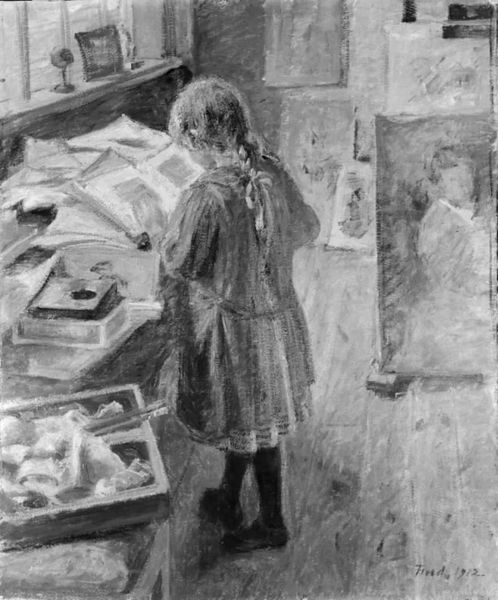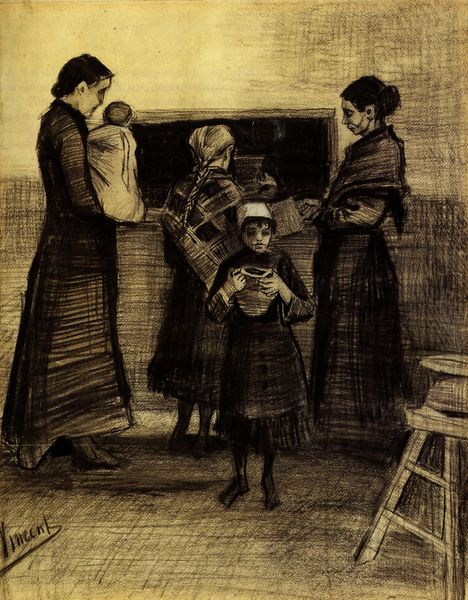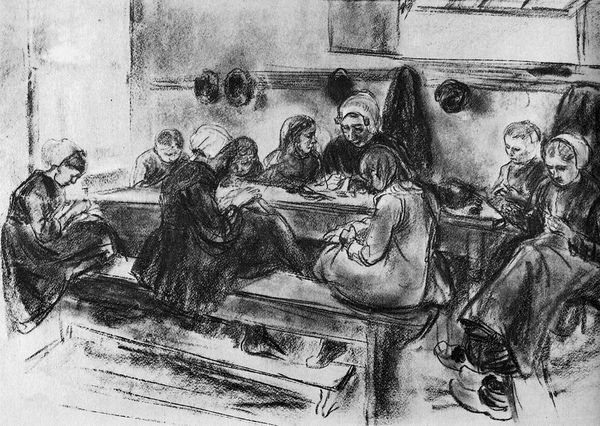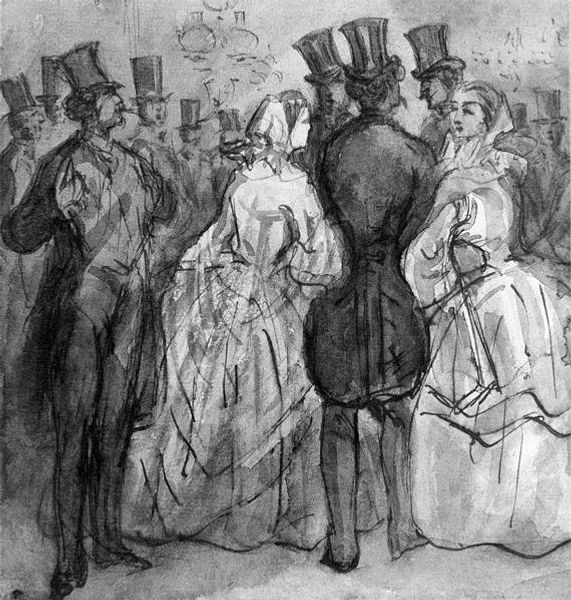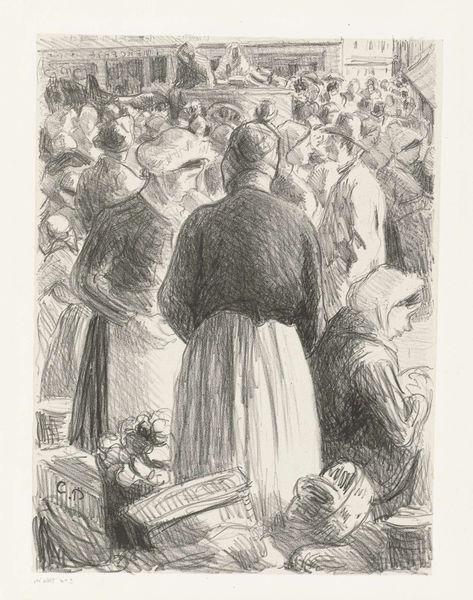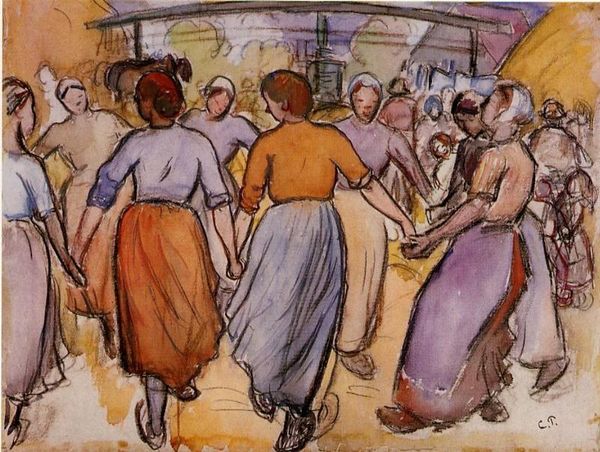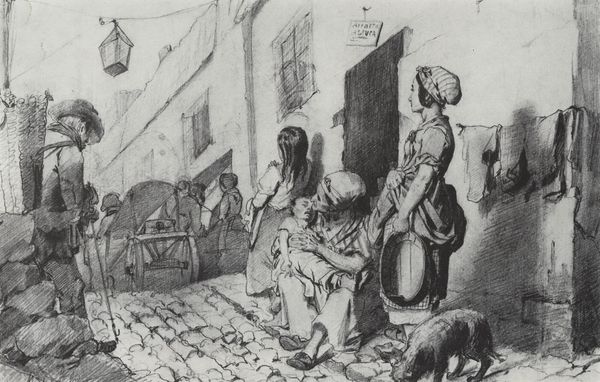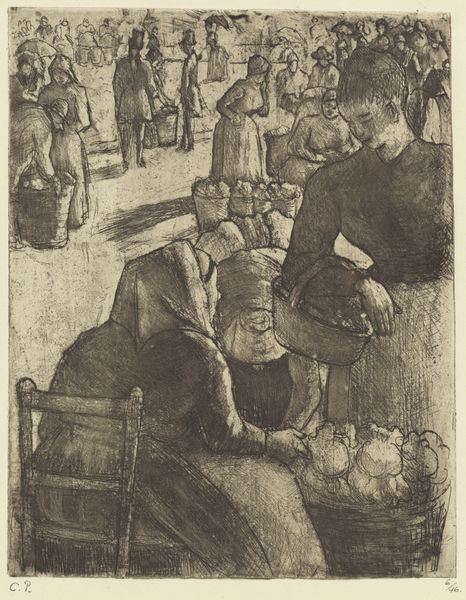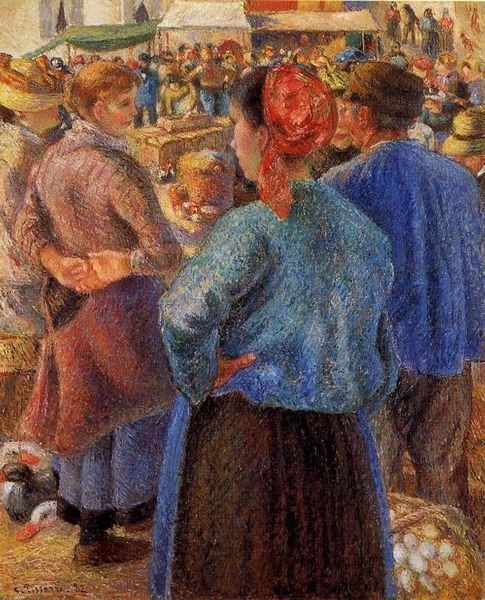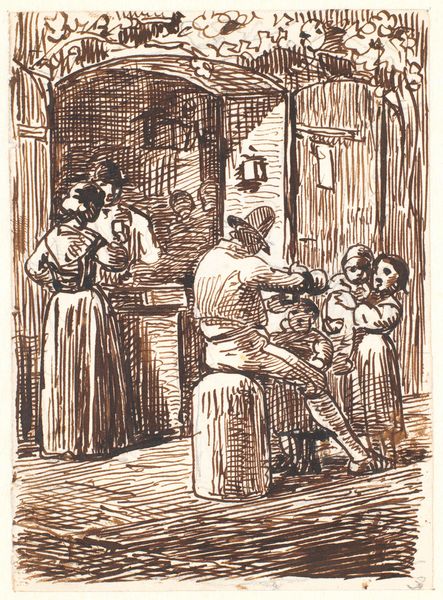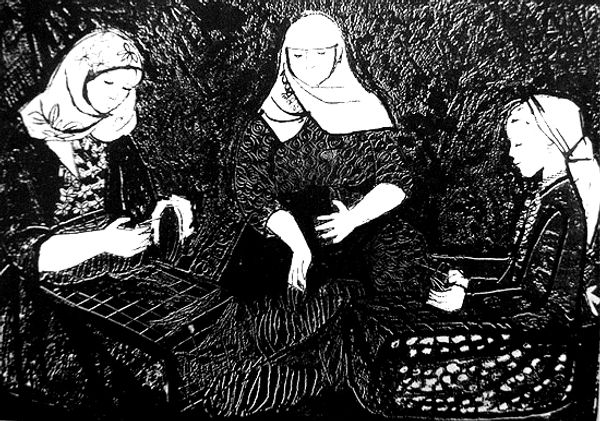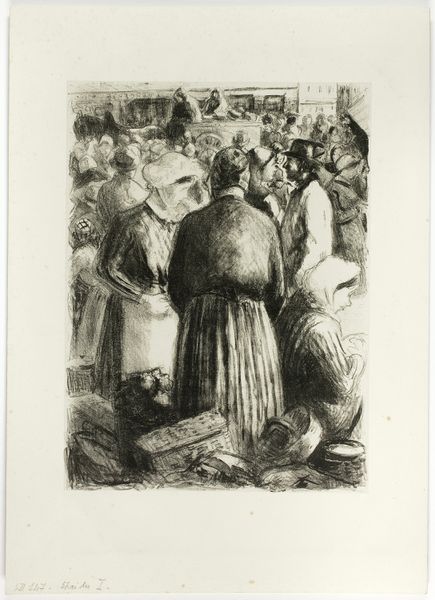
drawing, painting, plein-air, impasto
#
drawing
#
narrative-art
#
painting
#
plein-air
#
figuration
#
impasto
#
group-portraits
#
expressionism
#
cityscape
#
genre-painting
Dimensions: 489 mm (height) x 342 mm (width) (monteringsmaal), 326 mm (height) x 269 mm (width) (bladmaal)
Editor: This is "Markedet i Falaise, Normandiet," painted by Othon Friesz between 1901 and 1904. It depicts a bustling marketplace, and I’m struck by the contrast between the dark, almost somber figures and the lively energy of the scene. What do you see in this work? Curator: The power of Friesz's marketplace scene resides in its symbolic depiction of community and tradition, doesn't it? Think about the figures themselves: They're not just people; they represent the collective memory of Falaise. Editor: Collective memory? Could you expand on that? Curator: Absolutely. The figures, rendered with such thick impasto and dark hues, evoke a sense of history, almost like shadows of the past inhabiting the present. Look closely, and consider the specific items they are selling; what are they? What significance might these objects hold for the cultural identity of this place? Editor: I see baskets, maybe some textiles... They seem to be ordinary everyday things. Curator: Precisely! It’s the "everydayness" that anchors them to their place, that allows you to recognize what remains over time. The choice of rendering a local marketplace – what narratives do such sites and gatherings transmit from one generation to the next? Editor: So the painting isn’t just capturing a single moment but something much larger and more enduring. I never considered how genre scenes could do more than represent a simple scene. Curator: Consider the cityscape background—are you drawn to any architectural aspect in particular? The shops serve to memorialize the historical backdrop against which daily life plays out. Editor: Seeing the market in this way is interesting; you’ve reframed how I initially perceived the people in it. They are players in an unfolding generational narrative, bound together by place. Curator: It speaks to how everyday imagery can be culturally symbolic and contain a community's long memory.
Comments
No comments
Be the first to comment and join the conversation on the ultimate creative platform.

